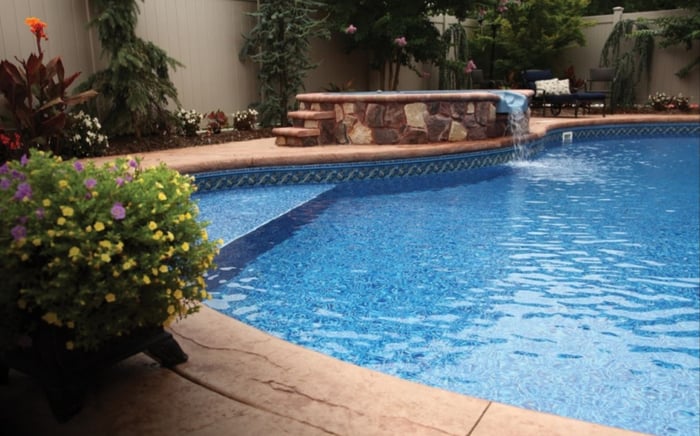Most Pool liner problems are due to an improper use of chemicals-too much or too little. For the proper chemical balance, you can purchase a test kit to measure the chemicals in your swimming pool water. PH is the measure of acidity/basicity level in your swimming pool. A proper pH level (7.2 to 7.6) not only increases comfort, but also helps the chlorine clean your swimming pool better, because chlorine needs a certain pH level to kill bacteria and algae.
All vinyl liner pools must be keep stabilized with cyanuric acid between 25 ppm and 50 ppm. A level of less than 50 ppm and with a pH level of less than 7.0 and/or a chlorine level greater than 3.0 ppm can cause the swimming pool liner to form wrinkles. Do not use large, single doses of hydrochloric (muriatic) acid to adjustment pH or total alkalinity. If not blended sufficiently with the swimming pool water, it may chemically attack the liner's print pattern and damage the liner. Ask your pool dealer for the recommended procedure for adjustment of total alkalinity if you're not sure.
Calcium levels should always be kept at least 175 ppm to avoid corrosive conditions. Calcium levels greater than 500 ppm may cause problems like cloudy water and/or scaling on the pool liner surface.
Your water test kit should show a total alkalinity. The total alkalinity level should be kept at 80-120 ppm.
Always allow each chemical to circulate complete throughout the pool before adding another chemical. Certain combinations of chemicals at a high concentration can cause bleaching or damage to the pool liner. You should test for the presence of dissolved metals any remove as needed, because they may stain the pool liner or combined with calcium hardness to form discolored deposits. Never use abrasive cleaning agents or cleaning aids.




